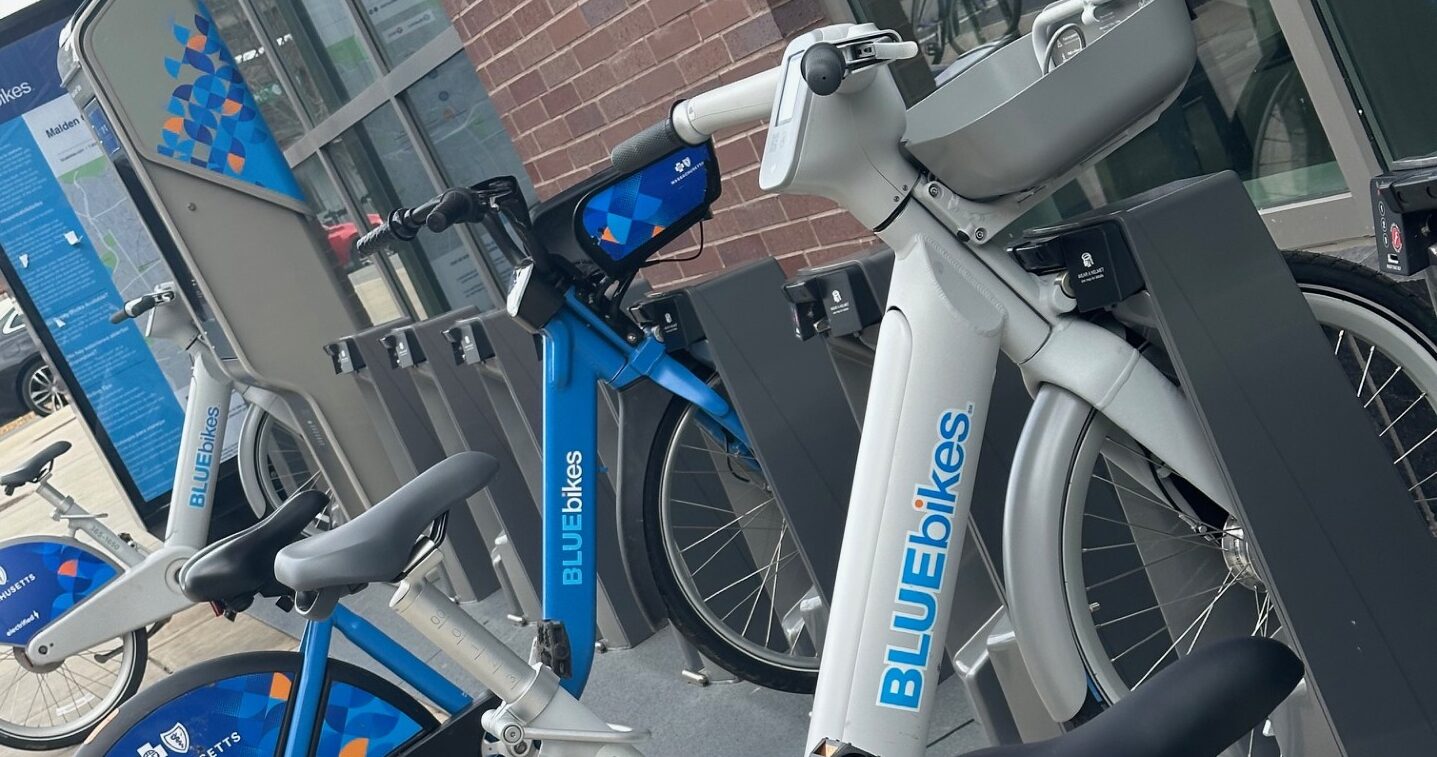I will say there is one nonsense one by Prentiss/Rox Crossing.
At Prentiss, heading south, it shows that pedestrians should take the left path that leads down to the sidewalk....
View attachment 56745
But from Roxbury Crossing going north, following the pedestrian signs leads first to the sidewalk...
View attachment 56746
Then when you get to what it says is the pedestrian path south, and it says it's the bike path, and for pedestrians to stay on the sidewalk...
View attachment 56747
It's contradictory and if all signs were followed properly there wouldn't be any bikes ending up down here on the sidewalk, and pedestrians would need to go the long way around the block next to six lanes of traffic north but cut across only going south.
Interesting find. So, the signs all show the same basic principle, which is that pedestrians on the stretch between Tremont and Prentiss are routed toward the sidewalk, and bikes are routed away from it.
However, the third pic, in my mind, shows how utterly hare-brained DCR is, and is just wrong. That pic shows a post at the juncture of an ancillary path that allows a pedestrian who is walking inbound on the SWC sidewalk, to remain in the linear park of the SWC, since if they continued inbound on the sidewalk, they would hit Prentiss St, and then either have to take a left to rejoin the SWC, or continue on city sidewalks past the police station. The issue here and the reason it shows how utterly moronic the thinking is in our government bureaucracies is that it shows that someone clearly thought that every single juncture of paths on the SWC *must* direct pedestrians one way and bikes another. And at the site of this sign, up to Prentiss, the sidewalk still is actually DCR--it is part of the SWC park, despite the fact that it basically takes you to a dead end at Prentiss St where you should have gone left, to continue on the park behind the police station. So if you had zero ability to think outside the box, you would realize that at this particular location, the principle of "sign must show bikes go one way and pedestrians another way" doesnt hold, and the logical thing to do would be either no sign at all, or to make a special sign that tells people to stay left to stay in the park, or stay right to continue onto city-owned property. But this would be far too complex.
I did look over old maps and aerials on Mapjunction as I was curious as to whether that cut-thru path represented some vestigial connection to a road that might have been obliterated, but it seems to have always just been a feature of the park, likely simply to save people a right angle turn at Prentiss/Columbus.
You're welcome to that opinion, but believe it or not, people legitimately don't notice those signs. And yes, I suppose in many cases it's because they care more about something else, such as interacting with their phone, or the conversation they are having with a walking companion, etc. But I really do think this is better explained by Hanlon's Razor.
No way to make it pure fact without just asking people on the path, but I would say this is more than "just opinion", it's a reasonable and practical conclusion: for the reason that most of the SWC - esp the parts we are discussing here - are utilized by locals. If youre walking on these stretches, with the exception perhaps of inbound from Roxbury Crossing, youre either someone who lives near here, or you use the path as part of your commute. This is not a park that is filled with people who've never been here before. It's people who use it daily. So the idea that they just happened to not notice because they were looking at their phone, or someone missed the signs at chest level staring them in the face day in and day out, really doesnt hold. People see the signs, they know what they say, and they dont follow them. For reasons articulated by...
I think most of all, people go on the Southwest Corridor to be on a path, not on a sidewalk, so if the walking “path” is indistinguishable from a sidewalk, people will always choose the bike path. When I walk it, I will always stay on the walking path when the facilities are equivalent but when that path becomes a sidewalk, I switch to the bike trail. When I bike it, I’ve never been mad at people who do the same because who wouldn’t make that decision? The more inviting path that feels more nature-y will always win, and thinking otherwise was a poor choice on the designer’s end, not a poor choice of the walkers. It’s the same situation as when a bike lane is so poorly thought out that it’s better to ride in the road - not the biker’s fault (though the driver might disagree).
People all know. And
@thepianoperson, I dont actually have a problem with people simply walking on the bike path part, per se. It's people walking three abreast, and having zero spatial awareness of consideration, that is obnoxious. But yes, the design makes it pretty unreasonable to expect people to choose to walk, eg, on the Amory St sidewalk. But that raises the question: since nobody ever uses the sidewalk on Amory, or Columbus, why are they there at all? Seems like they would be prime targets to eliminate.

